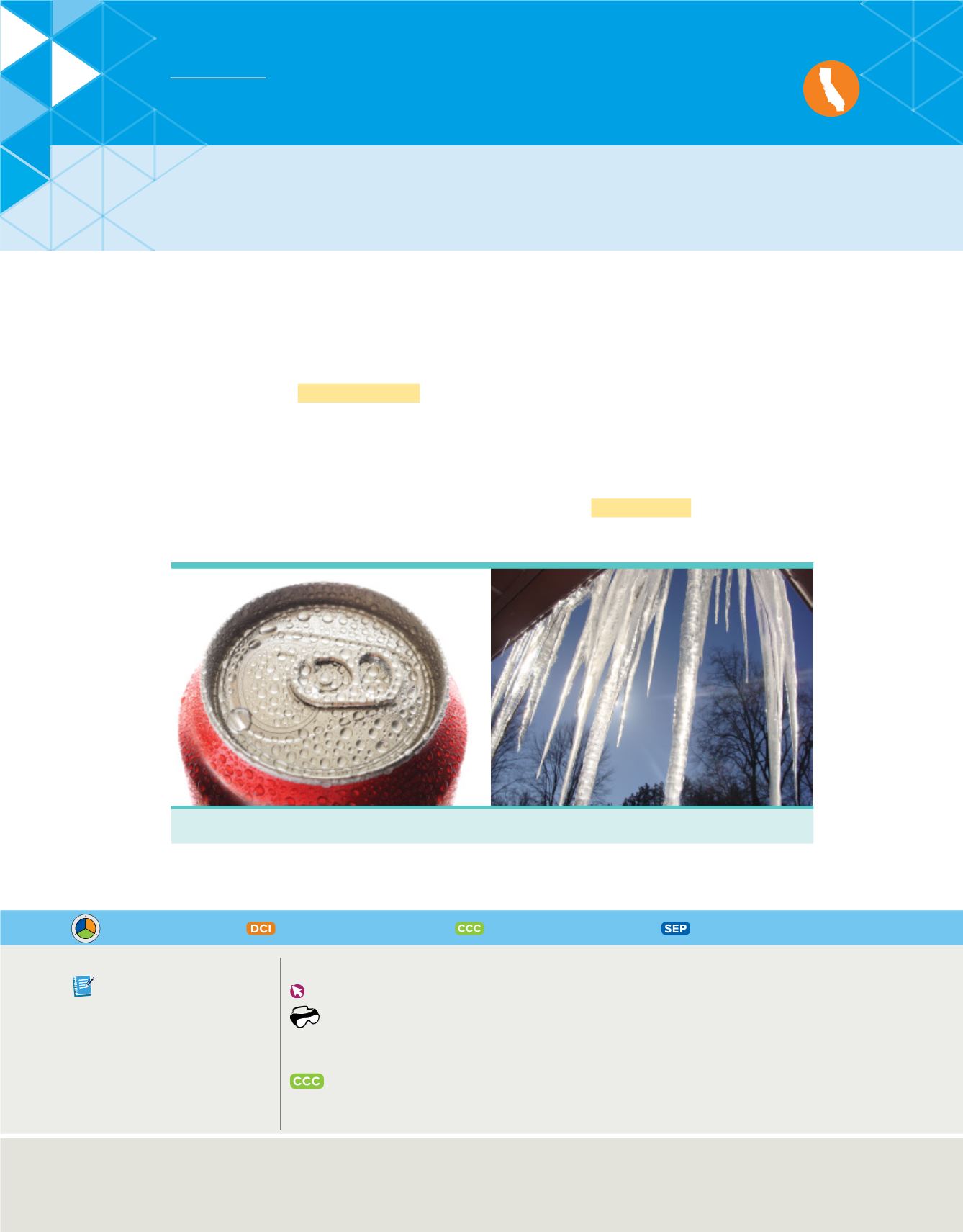

Physical Changes
Imagine crumpling aluminum foil from a smooth, flat, mirrorlike sheet to a round,
compact ball. The substance looks very different, but its composition is unchanged—it is
still aluminum. A change such as this, which alters a substance without changing its
composition, is a
physical change.
Phase change
As with other physical properties, the state of matter depends on the temperature and
pressure of the surroundings. As temperature and pressure change, most substances
undergo a change from one state (or phase) to another. A
phase change
is a transition
of matter from one state to another.
Figure 9
shows two common phase changes.
Figure 9
Condensation can occur when a gas is in contact with a cool surface, causing droplets to form.
Solidification occurs when a liquid cools. Water dripping from the roof forms icicles as it cools.
Condensation
Solidification
LESSON 2
CHANGES IN MATTER
FOCUS QUESTION
How does a substance change when it burns?
Disciplinary Core Ideas
Crosscutting Concepts
Science & Engineering Practices
3D THINKING
C
C
C
S
E
P
D
C
I
COLLECT EVIDENCE
Use your Science Journal to
record the evidence you collect as
you complete the readings and
activities in this lesson.
INVESTIGATE
GO ONLINE
to find these activities and more resources.
Laboratory:
Properties of Water
Obtain, evaluate, and communicate information
to determine the
structure and function
of
water in Earth’s surface processes.
Identify Crosscutting Concepts
Create a table of the
crosscutting concepts
and fill in examples you find as you read.
Lesson 2 • Changes in Matter
55
(l)Andrei Kuzmik/Shutterstock.com, (r)Stephen Bedtelyon/Shutterstock.com









